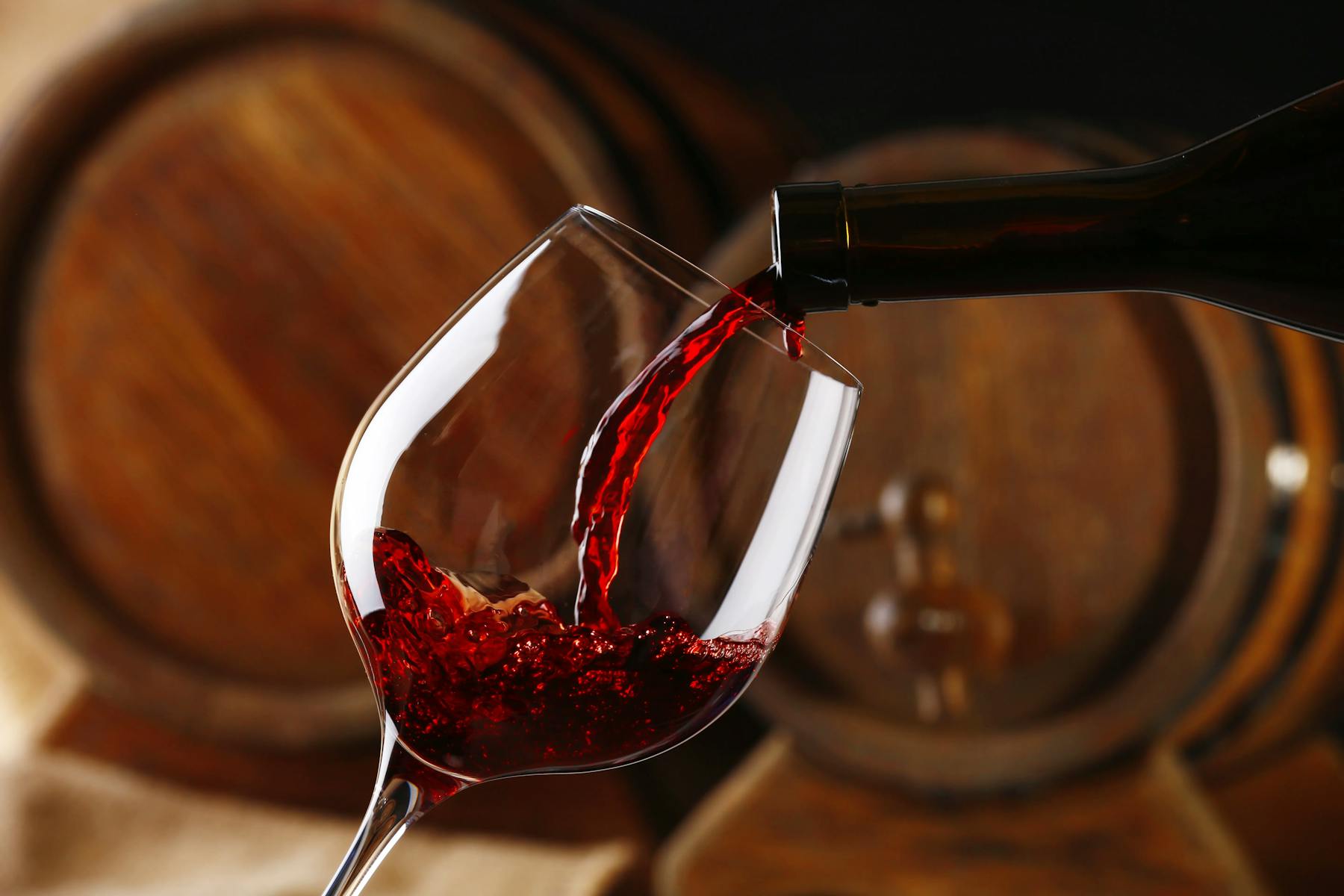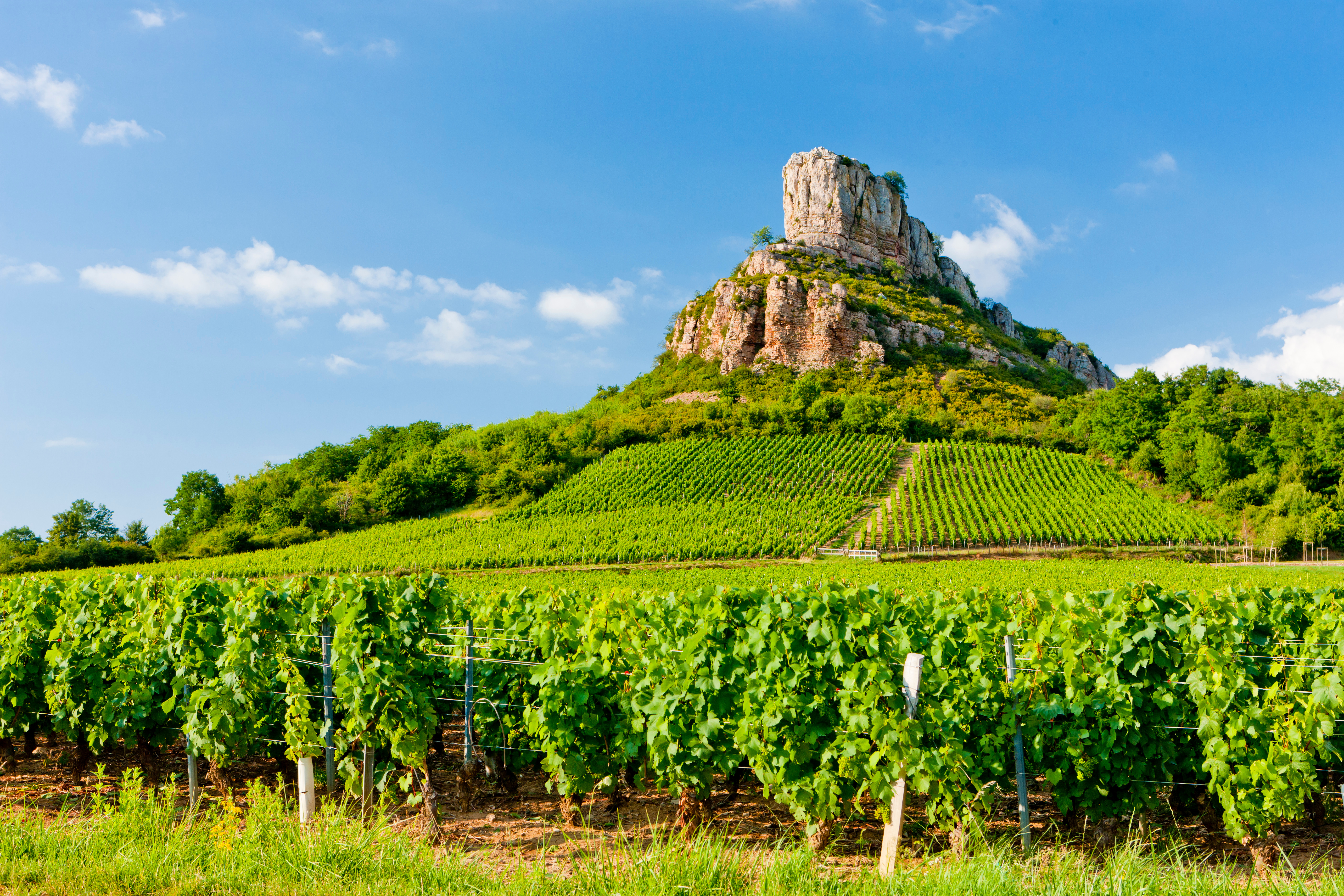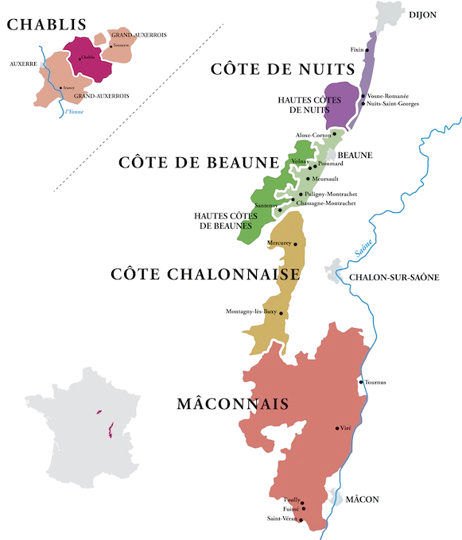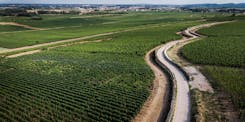The prestige of Burgundy wines

The terroirs of Burgundy
Situated in one of France's most prestigious wine-growing regions, Burgundy offers an exceptional diversity of terroirs, soils and climates; a multi-faceted vineyard that cradles inimitable Burgundy wines. When people talk about the Burgundy coast, they are usually referring to a narrow ribbon stretching from Dijon to Chagny. This ribbon is known as the Côte d'Or and includes Burgundy's 2 best-known côtes: Côte de Nuits and Côte de Beaune.
Soils
The terroirs of Burgundy wines offer a remarkable range of soil compositions, enabling the cultivation of a variety of grape varieties. The terroir includes slopes where the vineyards are located at an average altitude of 250 metres. The erosion of the Côte d'Or is due to the retreat of the sea at the end of the tropical climate and the appearance of the Alps during the Tertiary era, more than 15 million years ago. This erosion created poorer soils composed mainly of rock and limestone, with a colder climate and later ripening. As a result, the vines have to dig deeper to feed themselves, producing smaller berries with less juice but higher concentration, better quality and therefore a better wine.

The climate
The climate in Burgundy is fairly cold, with moderate oceanic influences. This climate favours later ripening. However, there are subtle nuances in the climate from one appellation to another, due to various factors such as altitude, the proximity of rivers such as the Saône and the Armançon, and the orientation of the vineyards.
In the Burgundy region, the term 'climat', unique to Burgundy wines, is used to express the wine-growing terroir. Burgundy's wine-growing climats have been demarcated for centuries, preserving their distinctive character and historical heritage. Each parcel of vines, bearing its own name, has a unique history, a singular taste and a specific position in the hierarchy of the region's wines.
Geographical location
The geographical location of the Burgundy vineyards also contributes to the diversity of the terroirs. The region is divided into several distinct zones. Wine-growing Burgundy lies between Champagne and Beaujolais, stretching from Chablisien to Mâconnais through 5 major wine-growing regions:
- Chablis
- Côte de Nuits
- Côte de Beaune
- Côte Chalonnaise
- Côte du Mâconnais
Each of these areas has unique geological, climatic and topographical characteristics, which are reflected in the wines produced there.

Key figures for Burgundy wines
The emblematic grape varieties of Burgundy wines
The reputation of Burgundy wines rests on the union of noble grape varieties, each making its own distinctive contribution to the sensory palette of the region's wines. White Burgundy wines account for 60% of the region's production, red Burgundy wines 29% and Crémant de Bourgogne 11%. Each grape variety lends its own unique character to Burgundy wines, resulting in balanced blends that captivate palates everywhere.
- Pinot noir: the emblematic grape variety, it produces elegant, complex red wines with aromas of red fruit and subtle notes of undergrowth and spices.
- Chardonnay: a versatile grape variety, it produces white wines of great finesse, with aromas of white fruit, lemon, hazelnut and butter.
- Gamay: the main grape variety in Beaujolais, it produces light, fruity red wines with aromas of tangy red fruit and a rather soft texture on the palate.
- Aligoté: the traditional white grape variety of Burgundy, it produces fresh, lively wines with citrus aromas, perfect with seafood and fish.
- Sauvignon blanc: an aromatic white grape variety, it produces expressive wines with aromas of citrus, boxwood and exotic fruit.
Classification of Burgundy wines
As with Bordeaux wines, classification is based on quality. But unlike Bordeaux, Burgundy wines are classified according to vineyards, not châteaux.
Classification of Burgundy wines
Grands crus
This is the highest level of classification for Burgundy wines. Each Grand Cru is carefully delimited, bears the name of its specific locality and has its own appellation (Musigny, Bonnes Mares, etc.).
Premiers crus
This category concerns specific vineyards within wine-producing villages, identified for producing wines of superior quality. The wines bear the name of the village of origin followed by the name of the specific climat (locality).
Bourgogne Village AOC
These wines come from specific vineyards in selected villages of Burgundy. The wines bear the name of the village of origin, in addition to the Burgundy appellation.
Bourgogne AOC
This category covers wines produced throughout the Burgundy region. These wines may be made from grapes from vineyards in different parts of the region.



